Ikebana and origami are two captivating Japanese art forms that have captivated people worldwide with their elegance and profound cultural significance.
Ikebana, often referred to as the “art of flower arrangement,” is a meticulous practice that goes beyond mere aesthetics, embodying harmony, balance, and spirituality. It emphasizes the careful placement of elements to evoke emotion and meaning.
Origami, on the other hand, is the intricate art of paper folding. Rooted in ancient Japanese traditions, origami transforms a simple sheet of paper into intricate sculptures, revealing the beauty of simplicity and precision.
These art forms offer a glimpse into Japan’s rich cultural heritage, highlighting its reverence for nature, mindfulness, and the artistry of the everyday.
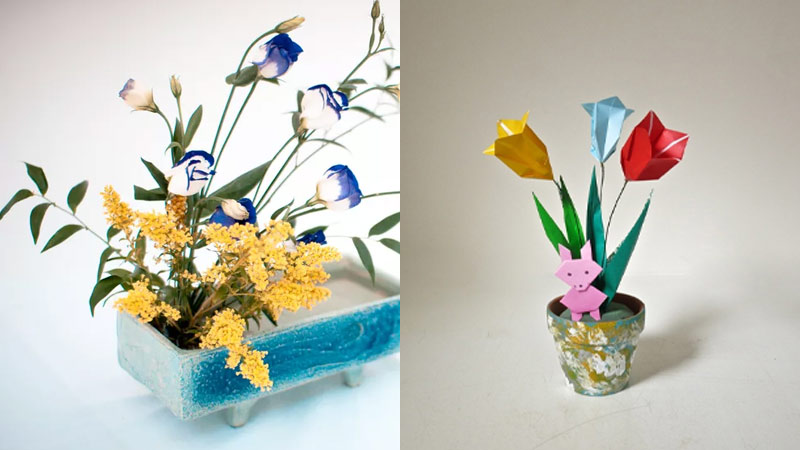
What Is Ikebana?
Ikebana is a revered Japanese art form that centers around the meticulous arrangement of flowers and plant materials.
Often described as the “art of flower arrangement,” Ikebana transcends mere decorative floral displays and holds a deeper cultural and philosophical significance.
The word “Ikebana” itself translates to “living flowers” or “arranging flowers,” highlighting the practice’s emphasis on capturing the essence of nature in a harmonious and aesthetic manner.
Unlike Western floral arrangements, which often aim for a full and symmetrical look, Ikebana focuses on minimalism, asymmetry, and the use of negative space.
Practitioners, known as “ikebanists,” carefully select each element, including flowers, branches, leaves, and even empty spaces, to create a composition that conveys emotions, seasons, and a sense of balance.
Ikebana has a long history dating back to the 6th century in Japan and has evolved into several distinct schools or styles over time, each with its own principles and techniques.
These schools emphasize various aspects of Ikebana, such as simplicity, symbolism, or creative expression.
One fundamental aspect of Ikebana is the idea of capturing the “ma” or the space between the elements.
This concept embodies the belief that the empty spaces in a floral arrangement are as important as the materials themselves, inviting contemplation and fostering a deep connection with nature.
Ikebana is not merely a decorative art; it is a form of meditation and a means of expressing respect for the natural world.
It encourages mindfulness, patience, and a profound appreciation for the beauty found in simplicity.
Ikebana continues to be practiced and admired worldwide, not only for its aesthetic appeal but also for its ability to convey the essence of Japanese culture and philosophy through the arrangement of flowers and plant materials.
What Are the 3 Rules of Ikebana?
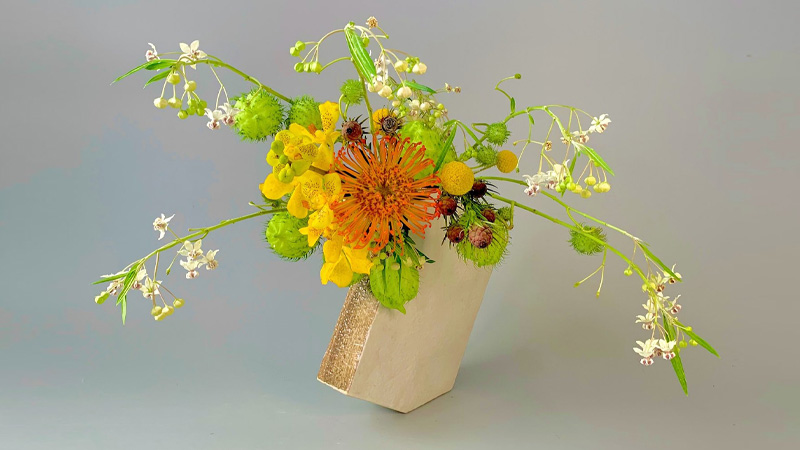
Ikebana, the Japanese art of flower arrangement, is guided by several principles and rules that vary among different schools and styles.
While there isn’t a universal set of three rules that apply to all Ikebana, there are common principles that many practitioners follow. These principles often revolve around balance, harmony, and minimalism.
Here are three key principles that are frequently emphasized in Ikebana:
Minimalism and Simplicity
Ikebana places a strong emphasis on minimalism, with practitioners striving to create arrangements that are simple and uncluttered.
This principle encourages the use of a limited number of elements, focusing on quality over quantity.
Each element, including flowers, branches, and leaves, is carefully selected for its significance and contribution to the overall composition.
Balance and Harmony
Achieving balance and harmony is fundamental in Ikebana. This involves careful consideration of the arrangement’s proportions, with attention to both the visual and spatial balance.
Ikebanists aim to create a harmonious relationship between the various elements, often emphasizing the use of empty space (ma) as a crucial component of the composition.
Asymmetry and Naturalism
Ikebana often incorporates asymmetry and naturalism in its arrangements. Unlike Western flower arrangements that strive for symmetry, Ikebana embraces the irregular and asymmetric balance, as it is believed to better reflect the dynamic and impermanent nature of life.
Ikebanists aim to capture the essence of nature and its ever-changing forms in their compositions.
Ikebana for Kids
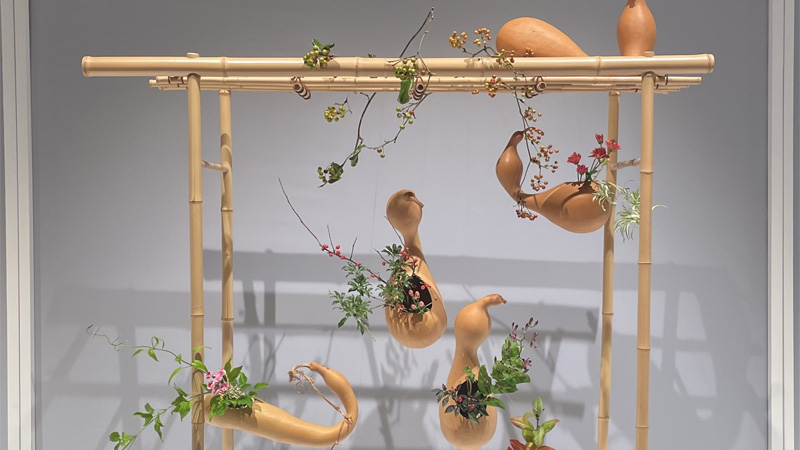
Ikebana, the Japanese art of flower arrangement, is a beautiful and meditative practice that can be enjoyed by kids of all ages. It teaches patience, attention to detail, and an appreciation for nature’s beauty.
Here are 10 Ikebana ideas tailored specifically for kids:
Budding Artists Bouquet
Encourage kids to select a variety of colorful flowers, then help them arrange the stems in a vase to create a beautiful and vibrant bouquet. Let their creativity run wild as they experiment with different flower combinations.
Miniature Ikebana Garden
Use a shallow container or tray to create a miniature garden scene. Incorporate small stones, pebbles, and tiny figurines to make a peaceful garden oasis. Add a few carefully arranged flowers as the centerpiece.
Seasonal Ikebana
Teach kids about the changing seasons by arranging flowers that represent the time of year. For example, spring might include cherry blossoms and tulips, while autumn could feature colorful leaves and chrysanthemums.
Floating Blooms
Place a few small flowers in a shallow bowl of water, allowing them to float gracefully on the surface. This simple yet elegant arrangement can be a fascinating introduction to Ikebana.
Branching Out
Use branches or twigs as the primary focus of an arrangement. Kids can add flowers or leaves to create a balanced composition. This idea emphasizes the importance of structure in Ikebana.
One-Stem Ikebana
Challenge kids to create an arrangement using only a single stem or branch. This minimalistic approach encourages them to appreciate the beauty of simplicity.
Origami Ikebana
Combine the art of origami with Ikebana by creating paper flowers and arranging them alongside real blooms. This hybrid approach allows kids to exercise their creativity with both paper and natural materials.
Fruit and Flower Fusion
Introduce kids to Ikebana by pairing flowers with fruits like apples, oranges, or pears. This not only adds a unique twist to their arrangements but also incorporates a sensory element.
Storytelling Ikebana
Have kids create an Ikebana arrangement inspired by a favorite story or book. They can select flowers and elements that represent characters, scenes, or emotions from the story.
Outdoor Ikebana
Take the Ikebana experience outdoors by arranging wildflowers or flowers from your garden. Kids can gather materials and create arrangements in a natural setting, connecting with nature as they arrange.
What Is Origami?
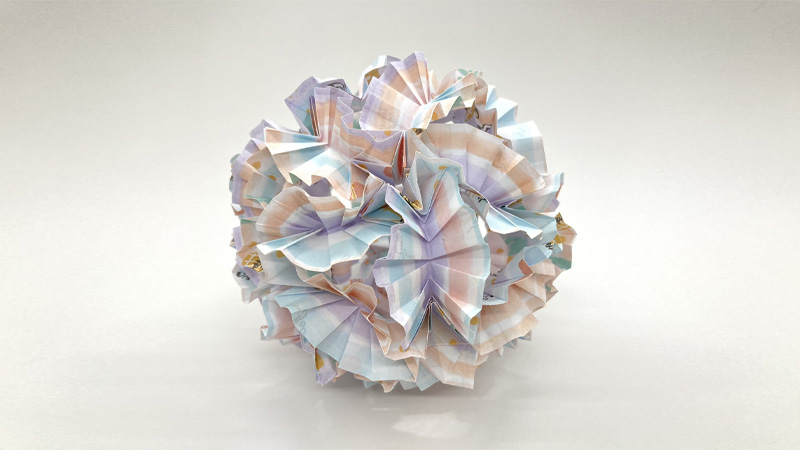
Origami is the traditional Japanese art of paper folding, where intricate and beautiful sculptures are created from a single sheet of paper through precise folding techniques, without the use of cuts or glue.
It’s a fascinating blend of creativity, geometry, and patience, with a history dating back centuries.
Origami can range from simple figures like paper cranes to complex, detailed designs. Beyond its aesthetic appeal, origami also offers cognitive benefits, enhancing spatial awareness, problem-solving skills, and patience.
This ancient art form continues to inspire and captivate people worldwide, making it a popular hobby, educational tool, and form of artistic expression.
What Is Origami for Kids?
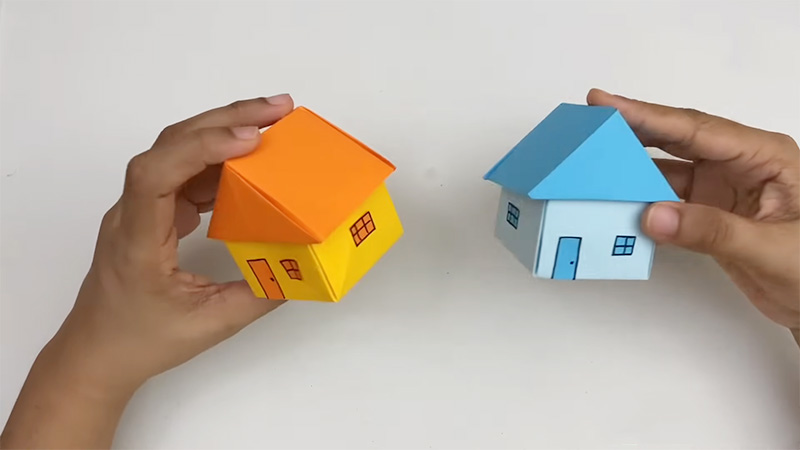
Origami for kids is a simplified and child-friendly version of the traditional Japanese art of paper folding.
It involves creating fun and accessible paper sculptures by folding paper into various shapes and figures, typically with straightforward instructions and colorful paper.
The designs are tailored to be age-appropriate and easy to follow, allowing children to develop their fine motor skills, creativity, and patience while having an enjoyable crafting experience.
Origami for kids often features simple animals, objects, or characters, making it an engaging and educational activity that fosters creativity and a sense of accomplishment in young learners.
FAQS
What is the philosophy behind Ikebana?
Ikebana goes beyond aesthetics; it embodies Japanese philosophical concepts like simplicity, harmony, and appreciation for the beauty of impermanence.
Is Ikebana only about arranging flowers?
While Ikebana traditionally focuses on flowers, it can also include branches, stems, leaves, and other natural materials. Ikebana emphasizes the artistic expression of these elements within a container.
Can anyone practice Ikebana?
Yes, Ikebana is accessible to people of all ages and backgrounds. It’s a meditative and creative practice that can be learned and enjoyed by both beginners and experienced artists.
What is the difference between Ikebana and Western flower arranging?
Ikebana prioritizes minimalism, balance, and negative space, often using unconventional containers.
Western flower arranging, in contrast, tends to emphasize fullness and symmetry and often uses more flowers.
Is origami suitable for all ages?
Yes, origami can be enjoyed by people of all ages, from young children to adults. There are simple designs for beginners and complex ones for those seeking a challenge.
To Recap
Ikebana and Origami are two captivating Japanese art forms that showcase the nation’s deep connection with nature, mindfulness, and artistic expression.
Ikebana, the art of flower arrangement, symbolizes harmony, simplicity, and the appreciation of fleeting beauty.
It is a medium through which individuals can engage with nature and their own creativity, fostering a sense of tranquility and mindfulness.
Origami, on the other hand, is the art of paper folding that transcends age and culture. It encourages fine motor skills, patience, and problem-solving while allowing limitless creative possibilities.
Both Ikebana and Origami celebrate the elegance of simplicity and the profound connection between human artistry and the natural world, offering enriching experiences that resonate across generations and cultures.
Leave a Reply